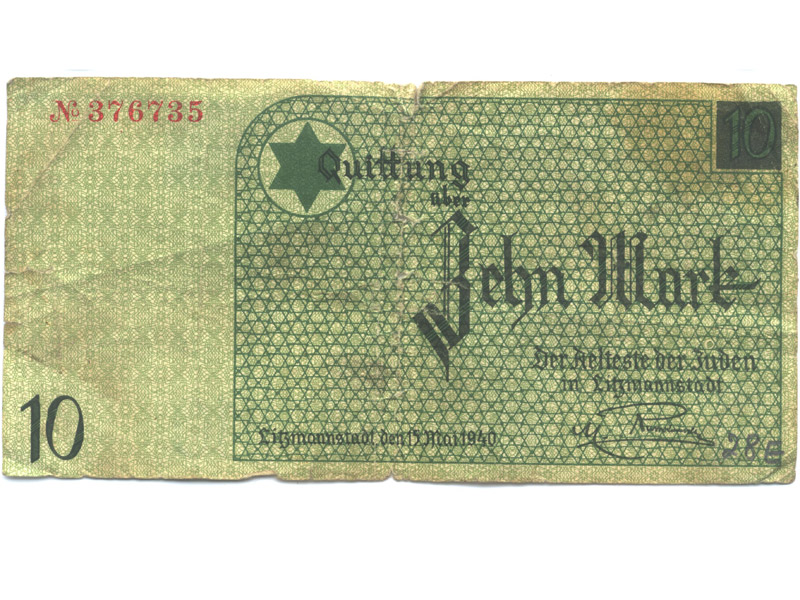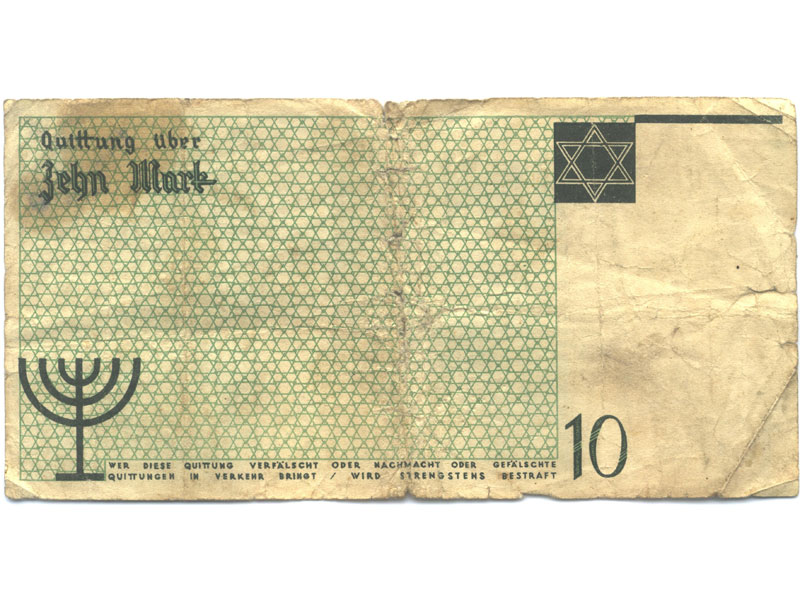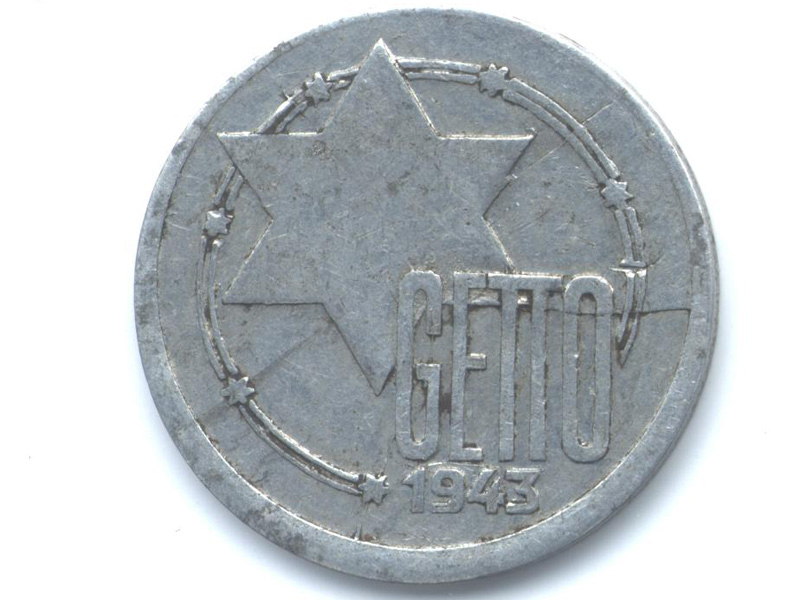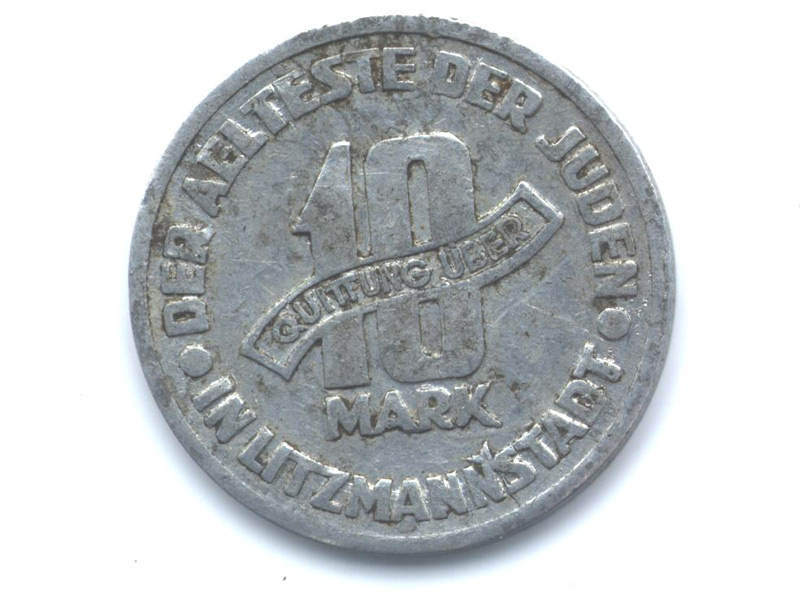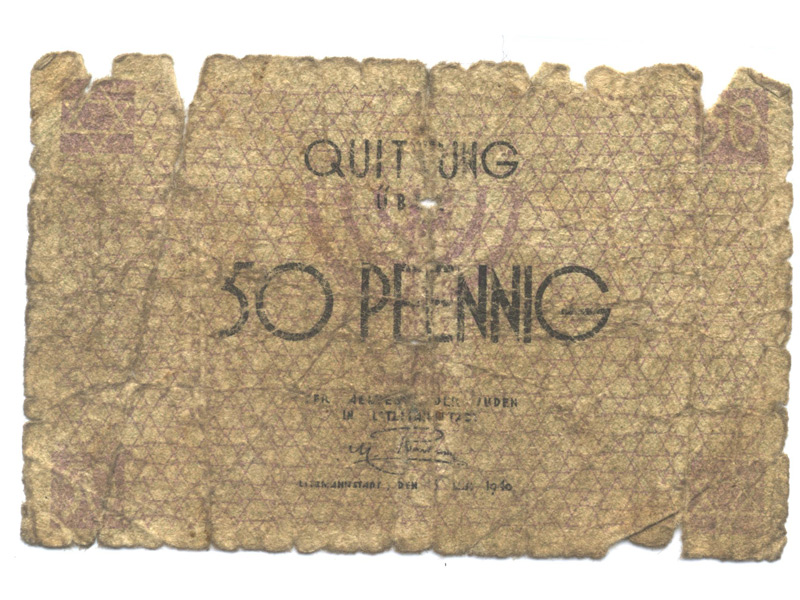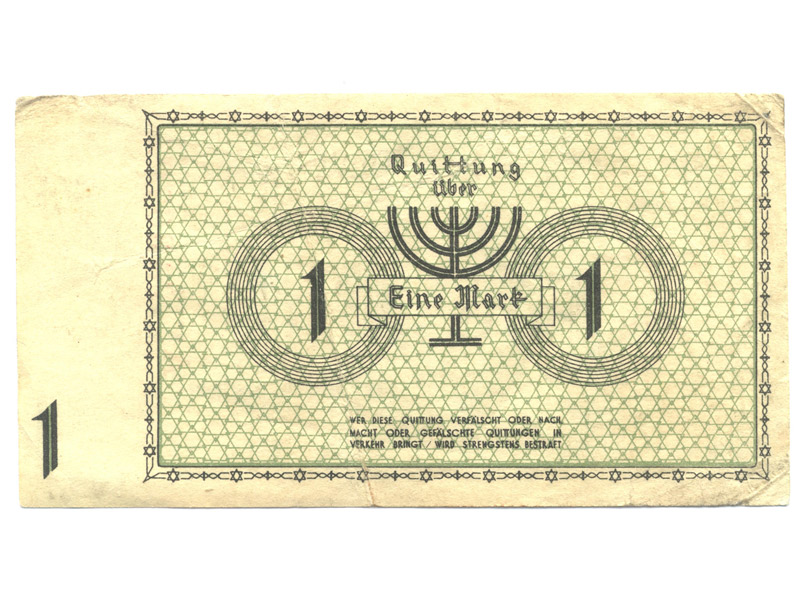Story:
Lodz Ghetto Currency
Lodz ghetto currency or ‘ghetto marks’ became official legal tender in the ghetto on 8 July 1940. They were colloquially referred to as ‘Rumkies’ after Rumkowski, Elder of the Jews. When the ghetto was first established, Jews were forced to sell furniture and other valuables for minuscule amounts of the ghetto currency, for which the Nazi administration made a healthy profit. They also had to exchange any foreign notes they owned, because possession of any currency was forbidden in the ghetto. The administration also determined that Jews were only allowed to hold ‘receipts’ for money; therefore all ghetto notes were inscribed with ‘receipt for’, and the amount. Introduction of this currency was a powerful mechanism for controlling the ghetto populace. It acted as a strong obstacle to smuggling in the ghetto because it was worthless outside of Lodz.
The ghetto notes were printed in the Manitius Printing House, outside the ghetto, under the supervision of the Gestapo, in denominations of 50 pfennig and 1, 2, 5, 10, 20 and 50 mark bills (they also minted coins). The bills displayed here are: 50 pfennig, 1 mark, 2 marks and 50 marks. These notes bore Rumkowski’s signature, Hanukkah candles and the Star of David.
The German administration paid so little for goods produced inside the ghetto that worker’s wages barely covered the cost of food. If inhabitants wished to purchase additional food or goods on the black market they could barely afford to due to swollen prices. For example, in 1942 the cost of 2 kilograms of bread rose from between 300-400 marks to 2,000, which was equivalent to two years wages.
One inhabitant was caught forging notes and was imprisoned by the ghetto police on 26 July 1941. He was imprisoned in the ghetto jail and deported to Chelmno extermination centre in January 1942.
